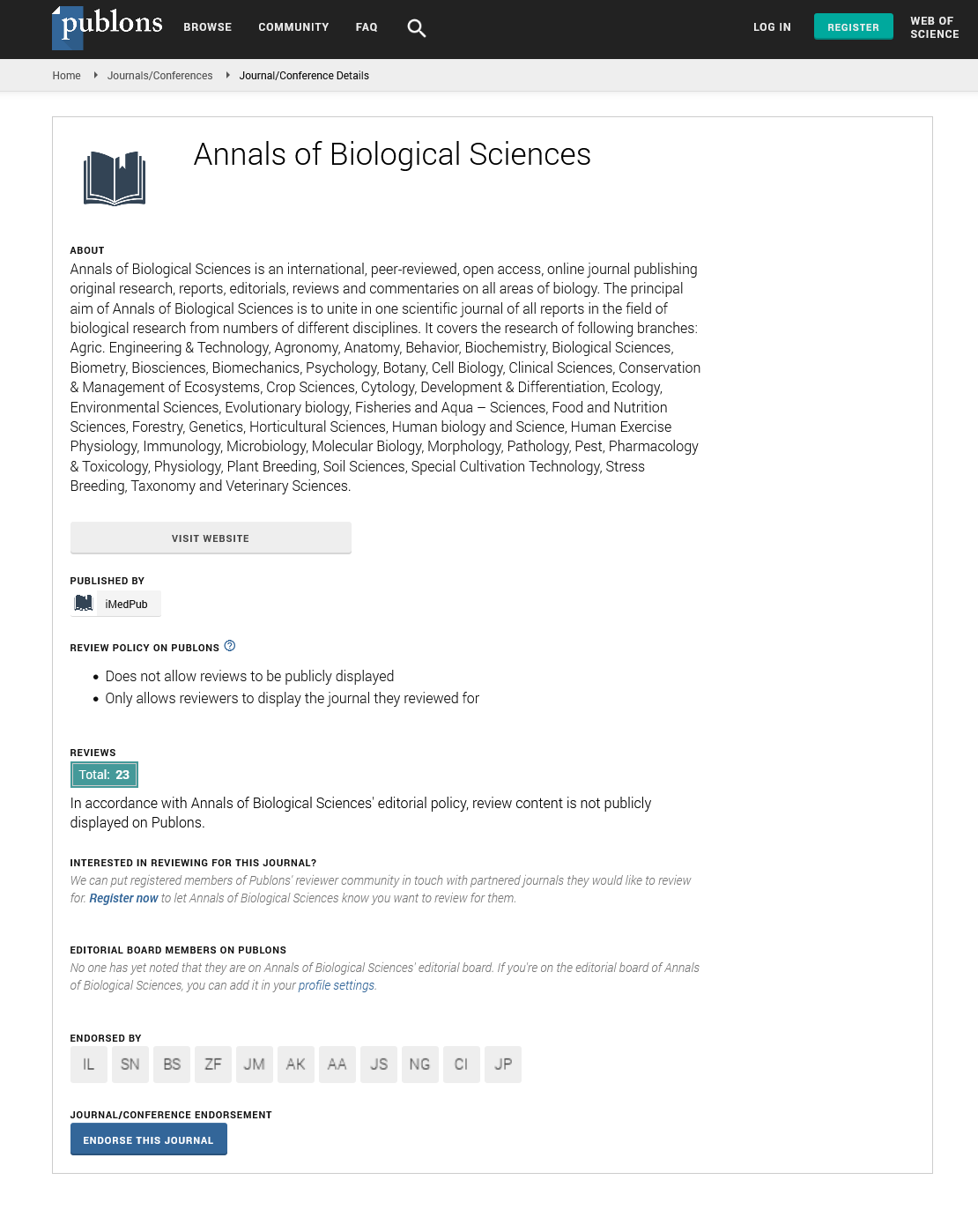ISSN : 2348-1927
Annals of Biological Sciences
Abstract
The Effects of Ultraviolet Light on Anthocyanin Accumulation in the Adventitious Roots of Sedum wrightii (Crassulaceae)
Several studies have supported the idea that anthocyanin accumulation may be a possible protection mechanism
in plants against DNA damage caused by ultraviolet radiation (UV). This study explored the accumulation of
anthocyanins in the adventitious root tips of Sedum wrightii using the following treatments: UVA, UVA+low UVB,
and UVA+high UVB. Following exposure to UV radiation, samples were analyzed for anthocyanin accumulation
using an ethanol extraction procedure. Using ELISA, additional root samples were analyzed for indicators of DNA
damage: cyclobutane pyrimidine dimers (CPDs) and pyrimidine (6-4) pyrimidone dimers (6-4 PPs). The anthocyanin
concentrations were significantly higher in the UVA + high UVB treatment than the other groups. The ELISA results
showed that a difference occurred between the control and the treatments of UVA, UVA+low UVB and UVA+high
UVB for CPDs and between the control and the UVB treatments for 6-4 PPs. Anthocyanins accumulated with
increased UV exposure. However, additional research is needed to determine the significance of anthocyanins in the
adventitious root tips of S. wrightii.
Author(s): Lila D Kerr, Dennis A Gravatt, Robert J Wiggers
Abstract | Full-Text | PDF
Share This Article
Google Scholar citation report
Citations : 406
Annals of Biological Sciences received 406 citations as per Google Scholar report
Annals of Biological Sciences peer review process verified at publons
Abstracted/Indexed in
- Google Scholar
- China National Knowledge Infrastructure (CNKI)
- WorldCat
- Publons
- ROAD
- Secret Search Engine Labs
Open Access Journals
- Aquaculture & Veterinary Science
- Chemistry & Chemical Sciences
- Clinical Sciences
- Engineering
- General Science
- Genetics & Molecular Biology
- Health Care & Nursing
- Immunology & Microbiology
- Materials Science
- Mathematics & Physics
- Medical Sciences
- Neurology & Psychiatry
- Oncology & Cancer Science
- Pharmaceutical Sciences
